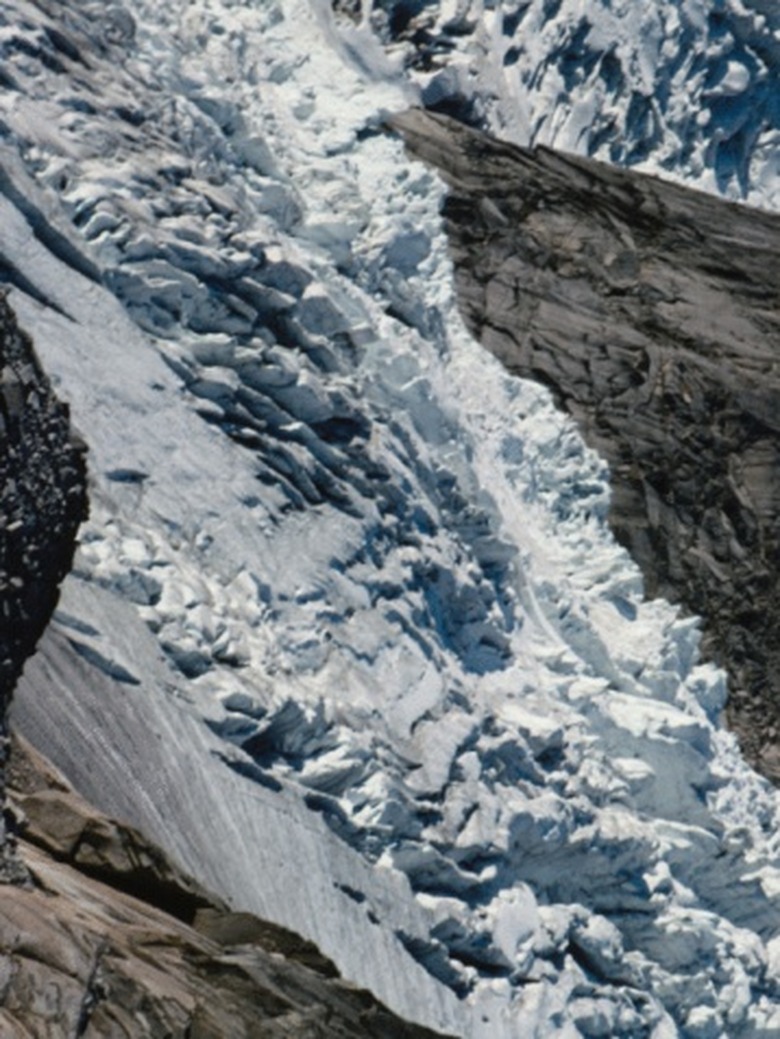Characteristics Of A Mountain Ecosystem
The characteristics of mountain climate and ecosystems vary depending on specific altitude, the landforms, biomes, bodies of water surrounding the mountain, and proximity to the equator. However, mountainous regions share a variety of characteristics despite differences in climate, weather, and specific indigenous life. These properties include rapid variation in weather and organisms, biodiversity, and the property of being fragile.
Physical Characteristics of Mountain Climate and Mountains
Physical Characteristics of Mountain Climate and Mountains
All mountain ecosystems share the property of high altitude, rising rapidly from the surrounding terrain. Generally, mountainous regions are defined as any rugged gradient rising above 5,000 feet. Mountains are distinguished from plateaus by their grade. While plateaus are also found at 5,000 feet or more above sea level, they do not share the steep incline of a mountainous landform.
Mountains cover approximately one fifth of the world's surface. Some of the most famous mountain ranges in the world include:
- Andes Mountains
- The Himalayas
- Rocky Mountains
- Appalachia
- Cascade Range
- The Pyrenees
Additionally, 80 percent of the world's fresh water originates in the mountains. The snow and ice that accumulates at the top of mountain ranges will melt and feed into rivers and lakes at the base of these mountain ranges. Mountain ranges also influence storms and freshwater rain creation, which also creates fresh water.
Weather and Characteristics of Mountain Climate
Weather and Characteristics of Mountain Climate
While the specific weather experienced in a given mountainous region may vary depending on location and altitude, some characteristics of mountain climate are shared between regions. First of all, mountain region climate is subject to drastic changes in temperature and weather from moment to moment. A thunderstorm can roll in from a clear sky in minutes, or warm temperatures can plummet below freezing over a very short amount of time.
The same massive variations in mountain region climate occur from one level of altitude to the next. Mountain ranges are sometimes subject to more precipitation than other ecosystems.
Life and Biodiversity
Life and Biodiversity
Mountain ranges are home to some of the greatest regions of biodiversity on the planet. The Sierra Nevada mountain range alone is estimated to house from 10,000 to 15,000 separate species of plants and animals. Part of this biodiversity is a result of rapid changes in climate based on altitude, which results in habitations for many types of organisms.
Due to the fragile nature of mountain ecosystems, large numbers of native plants and animals are considered at risk or endangered by organizations worldwide. Mountain ranges also provide homes for approximately ten percent of the world's human population.
Sensitivity
Sensitivity
Mountain ecosystems and mountain region climates are some of the most sensitive in the world. They are subject to extreme swings in weather, which can prevent recovery of lost biomass. They are vulnerable to a wide range of natural disasters that are not nearly as dangerous in the lowlands. These include:
- Avalanches
- Erosion
- Lava flows
- Earthquakes
Because some of the habitation belts in mountainous regions are very small and easily destroyed, the species housed there can be easily reduced in number. The fragile nature of mountainous ecosystems is a cause for great concern, due to the critical role they play in the life cycle both in the mountains and in the lands below.
Cite This Article
MLA
Bergeron, Jock. "Characteristics Of A Mountain Ecosystem" sciencing.com, https://www.sciencing.com/characteristics-mountain-ecosystem-8211750/. 22 November 2019.
APA
Bergeron, Jock. (2019, November 22). Characteristics Of A Mountain Ecosystem. sciencing.com. Retrieved from https://www.sciencing.com/characteristics-mountain-ecosystem-8211750/
Chicago
Bergeron, Jock. Characteristics Of A Mountain Ecosystem last modified August 30, 2022. https://www.sciencing.com/characteristics-mountain-ecosystem-8211750/




